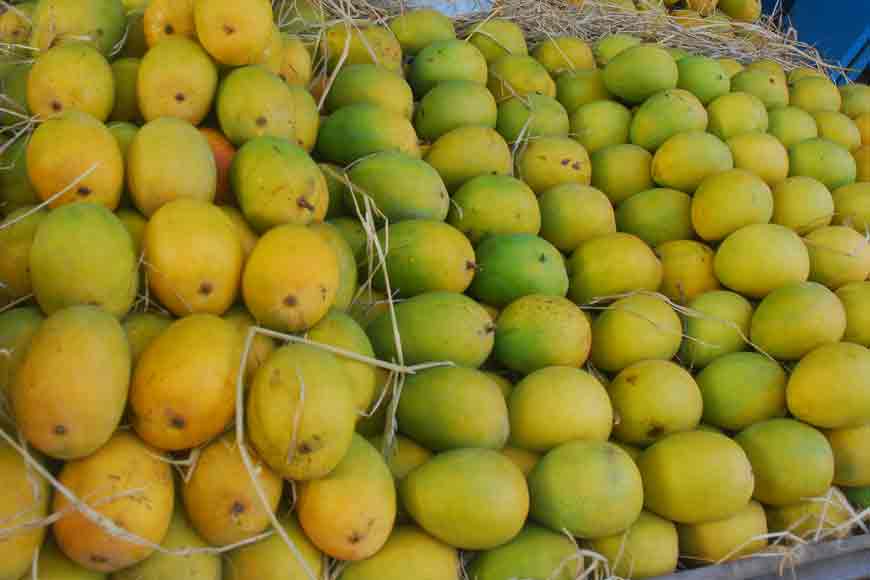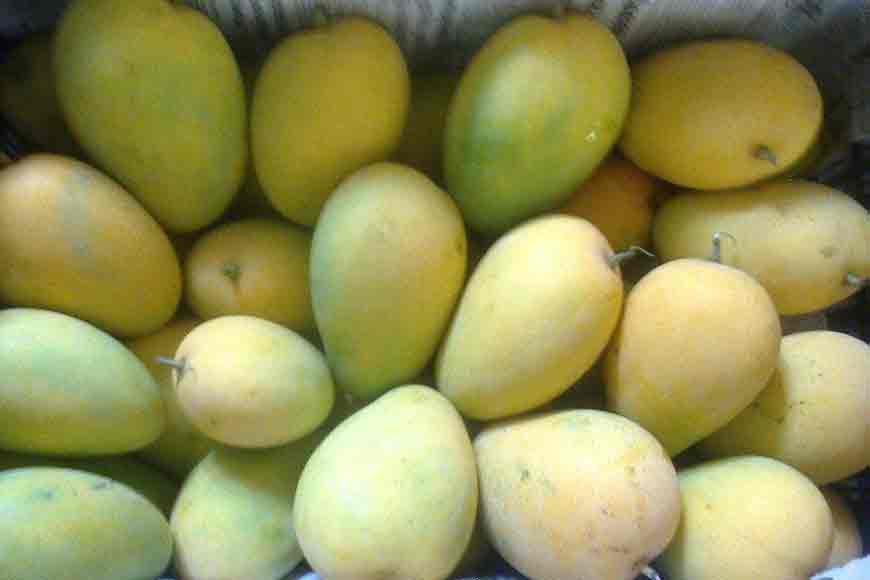Bengal’s love for historical mango varieties

Have you tasted those yummilicious mangoes this season? If not, you would be surely doing soon. Incidentally, Bengal is the seat of the greatest varieties of mangoes of the world. The Mango (Mangifera Indica) is the most important tropical fruit produced in West Bengal. Bengal stands fourth, in mango production in India, with almost an area of 68,000 hectares engaged in mango production. This important cash crop of West Bengal is extensively grown over the districts of Malda and more particularly on both banks of the Kalindi and Mahananda rivers. English Bazar is known as the largest and best mango growing area of this region and if you ever happen to step into the ‘Land of Gour Bangla’ you will surely get to see acres of mango orchards. These are also areas that grow export quality mangoes. English Bazar, itself has a dedicated 3,840 ha of land, that counts to almost one-sixth of its total area. It is followed by Ratua, Sibganj, Kaliachak, Kharba, Maldaand Harishchandrapur Police Stations.
In 15th and 16th centuries, India saw an exchange of fruits and vegetables with the ‘New World,’ie North and South America. This marked a sort of culinary turning point for the world. It opened up a new universe of vegetables and fruits, that were quick to come, on the plate, and got shipped to the ‘old’ world. This period saw the introduction of the potato, tomato and maize in India. But this was not a one-way street. It was during this time, that the popular Indian fruit mango, loved and prized by people across the Indian subcontinent, was introduced to Europe. In fact, the very name for the fruit - ‘Mango’ comes from the Malayalam word for it - Maanga, which Portuguese traders picked up as they transported the lush fruit, back home from the ports of Kerala.
Bengal has seen a lot of royal patronage for growing of these lush and delicious fruits. The patronage extended to horticulture and grafting of mangoes. Various new varities such as Begum Pasand, Rani Pasand, Kohitoor, were introduced by the Nawab to the mango orvhards of Murshidabad. In other parts of India also, these mango varieties were grafted, including the popular local varieties Totapuri, which was the first variety to be exported to Persia and other kingdoms. The Mughals relished their favorite addiction, with Emperors Jahangir and Shah Jahan handsomely rewarding their Khansamahs or cooks for their unique creations such as Aam Panna, which is still popular and Aam ka meetha pulao. The experimentation with mango seems to have been an obsession all along. The famed Dussehri or Dasheri mango which today sports a geographical indicator status is a brand in itself! This mango species is said to have been first grafted in the gardens of the Nawab of Lucknow in the 18th century at Dussehri village. The first fruit of the season was always presented to the Nawab.

Jiaganj, which is about eight kilometres from Murshidabad, the capital of Nawab Siraj-ud-Daullah, who finally lost to the British in the Battle of Plassey in 1757, marking the beginning of the 190-year colonial era in India, is famous for its mangoes. Murshidabad is home to 124 varieties of mangoes — many among them hybrids, developed under the patronage of the Nawabs. In fact, the culture of raising mango orchards in the area was synchronous with the crowning of Murshid Quli Jafar Khan as the first Nawab of Bengal, who transferred the capital to Murshidabad from Dacca in 1704.
Dilpasand is one of the endangered hybrid species of mangoes along with Nababpasand, Mirzapasand, Ranipasand, Sarenga, Kalasur, and a few others. These rare varieties are on the verge of perishing at Raisbag, an orchard named after Begam Raisunnesa, a princess of the Nawab family.It is only apt that we Bengalis have a deep connect with the mango... after all it is ours!










